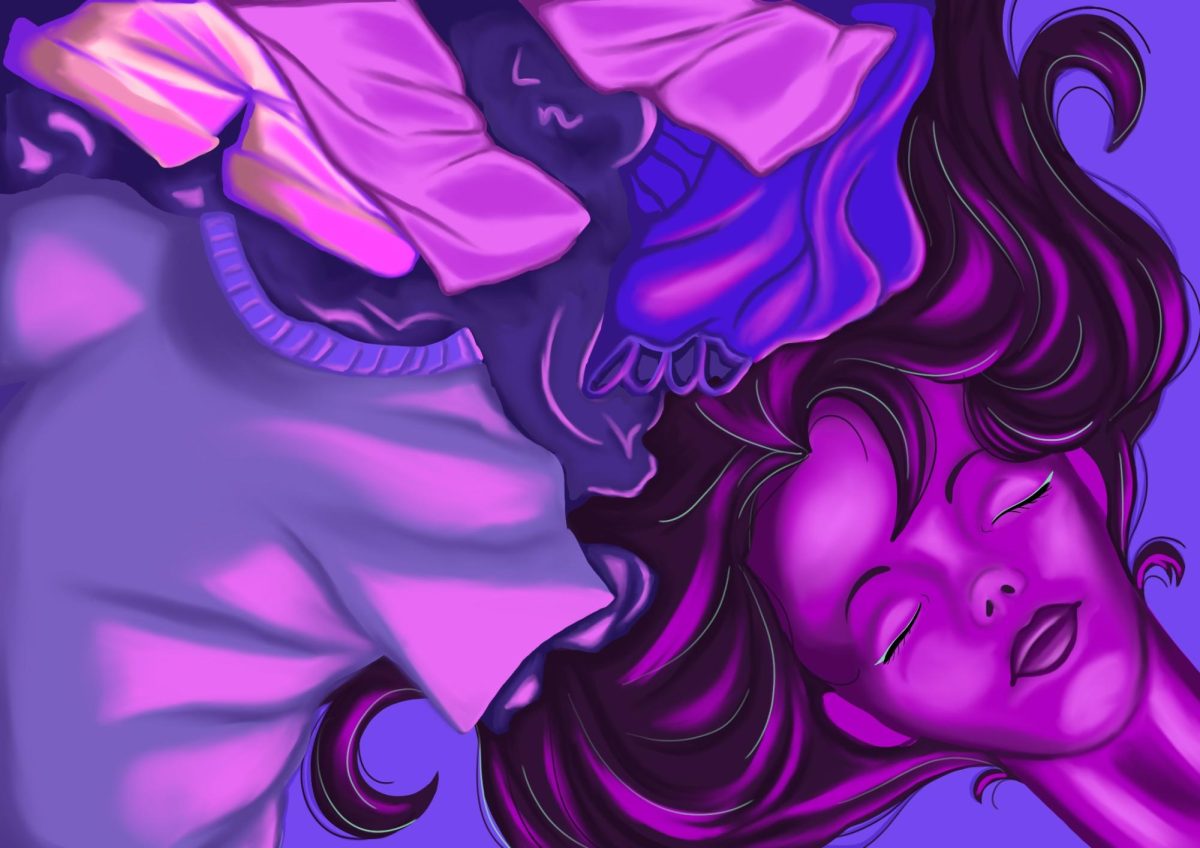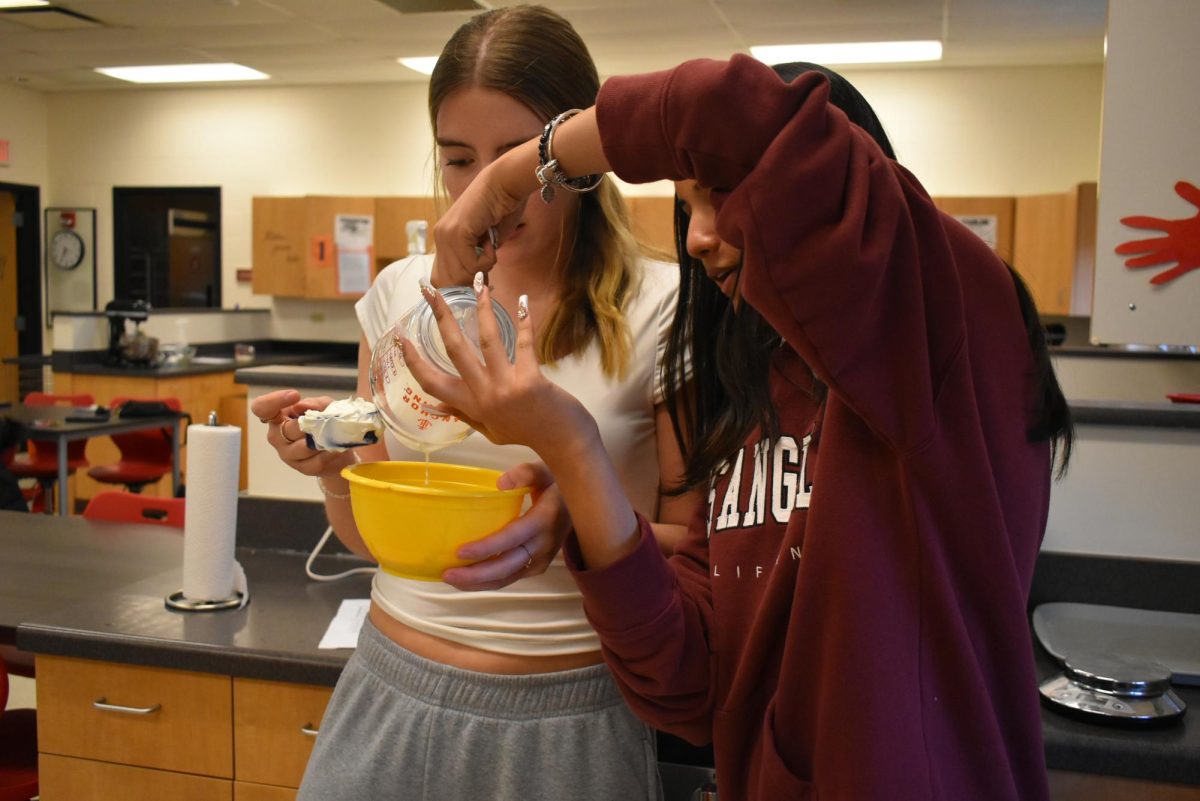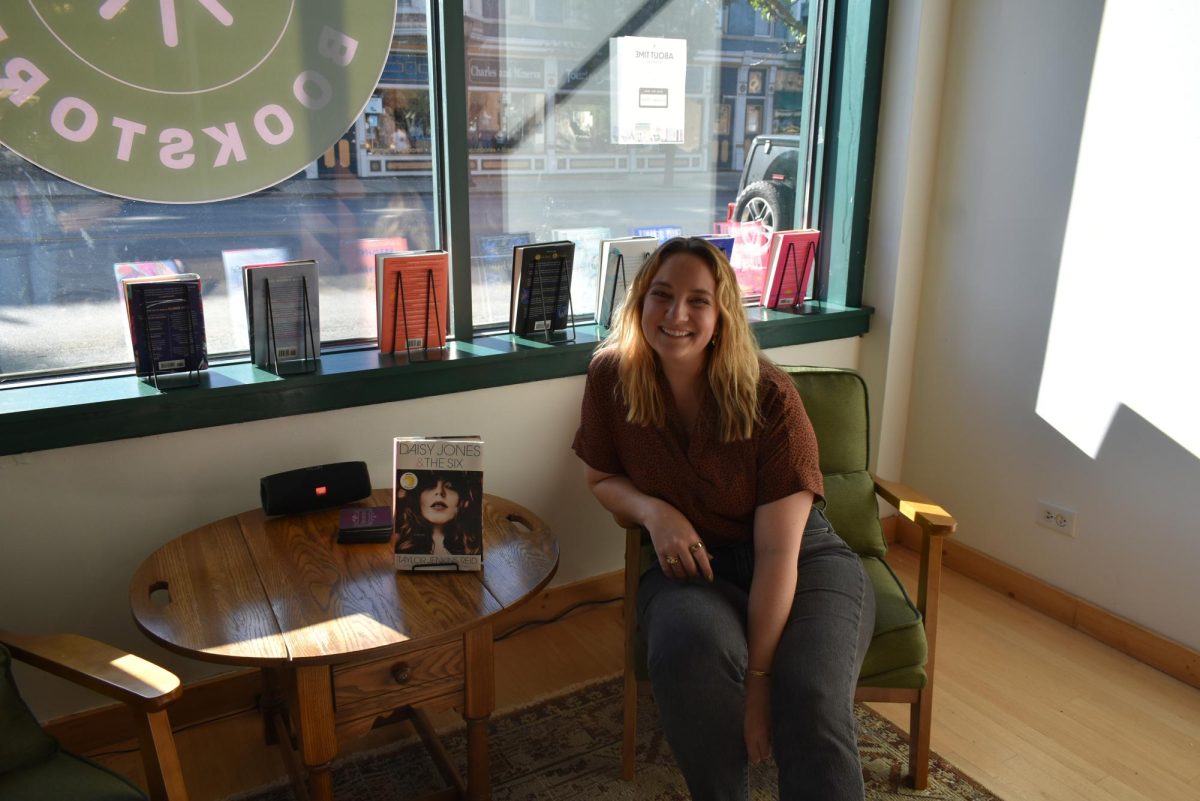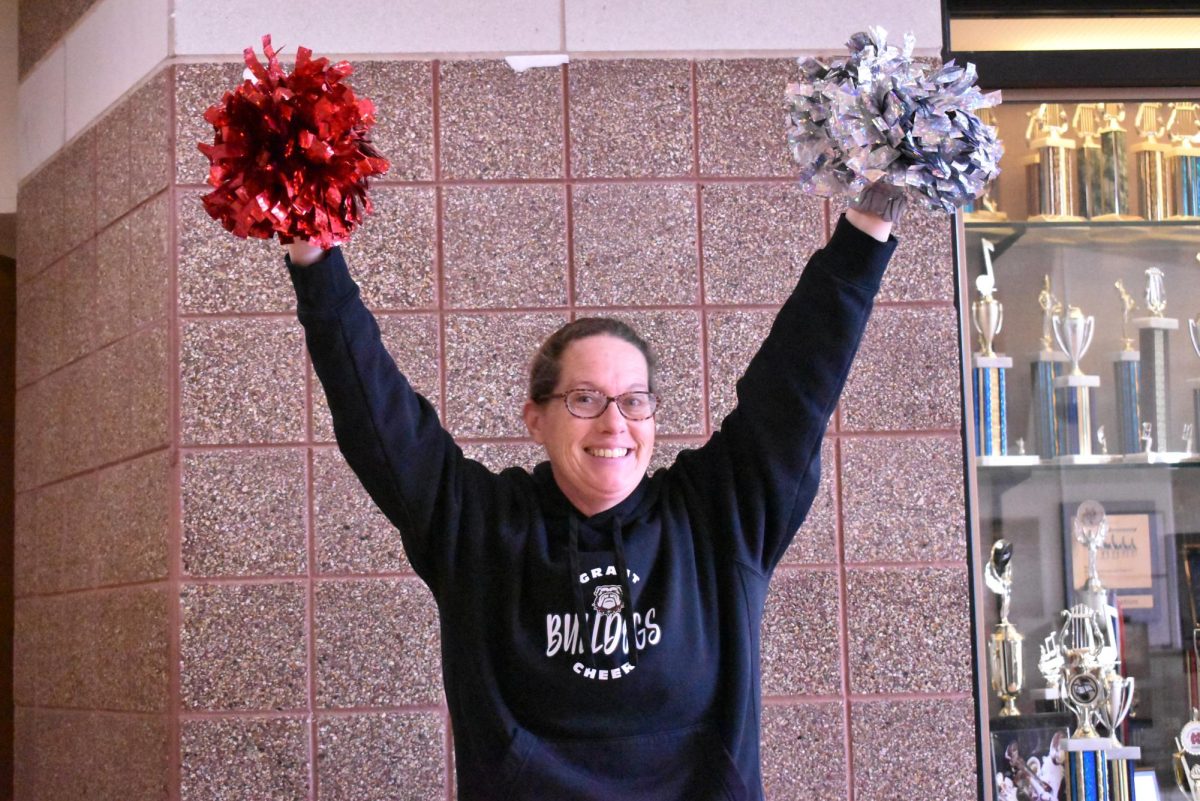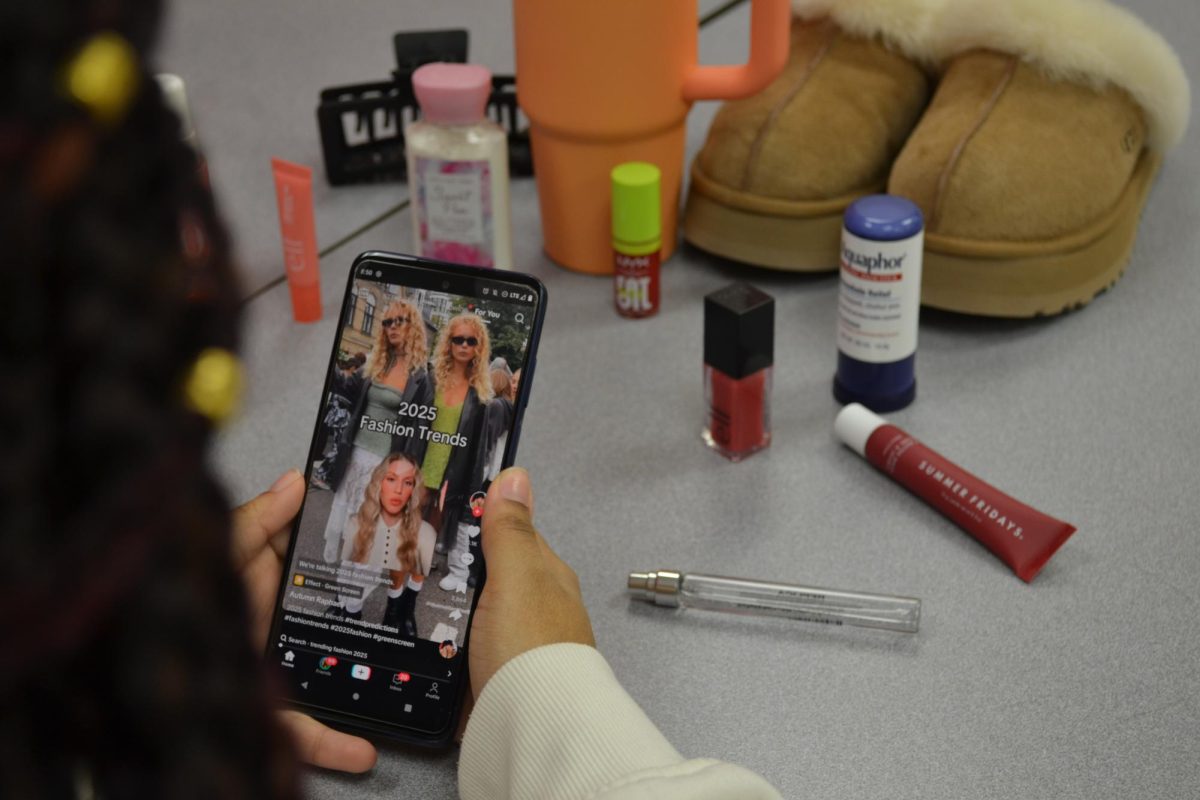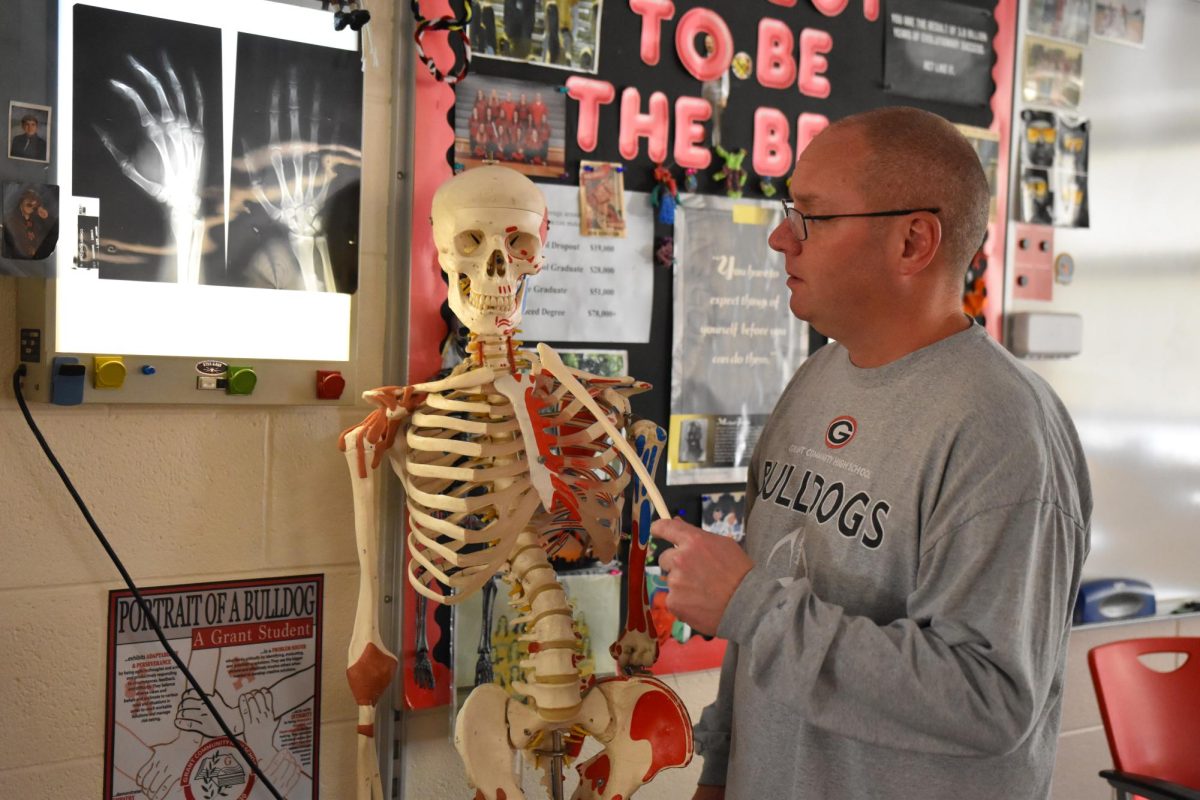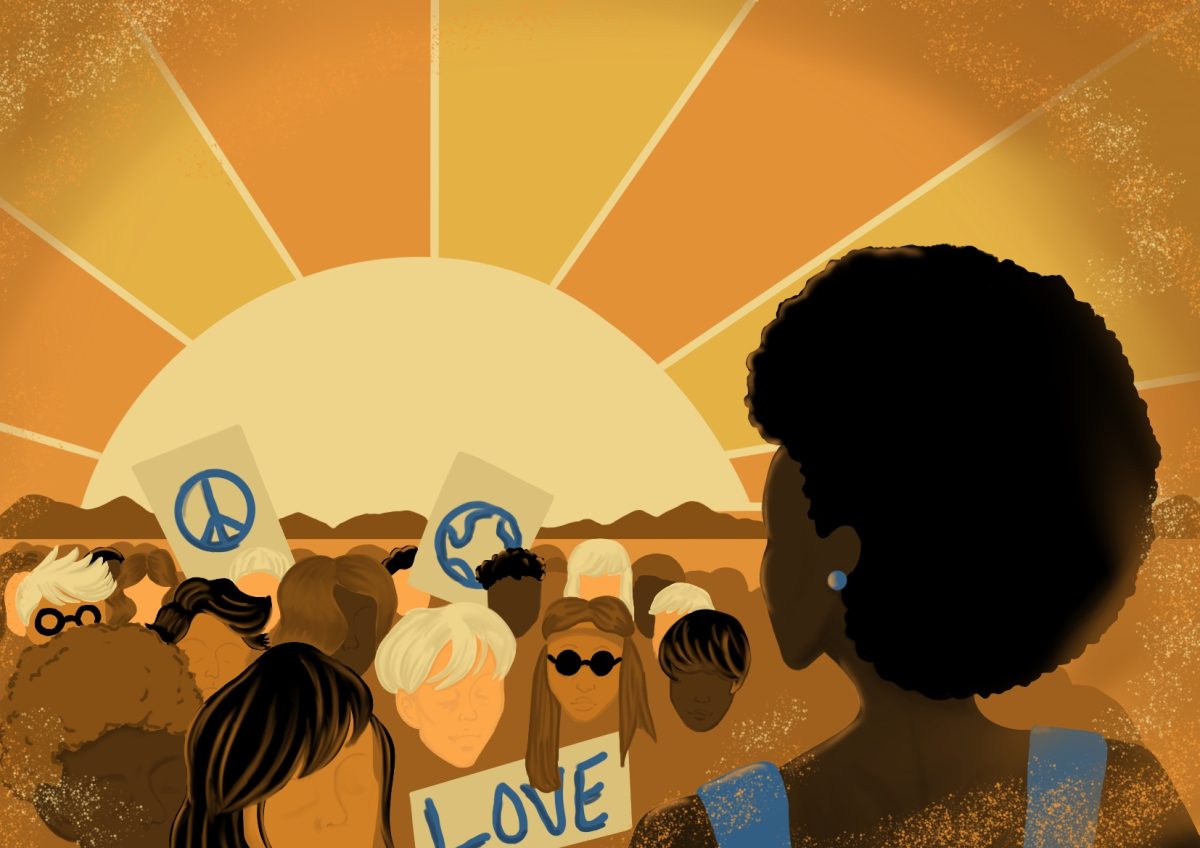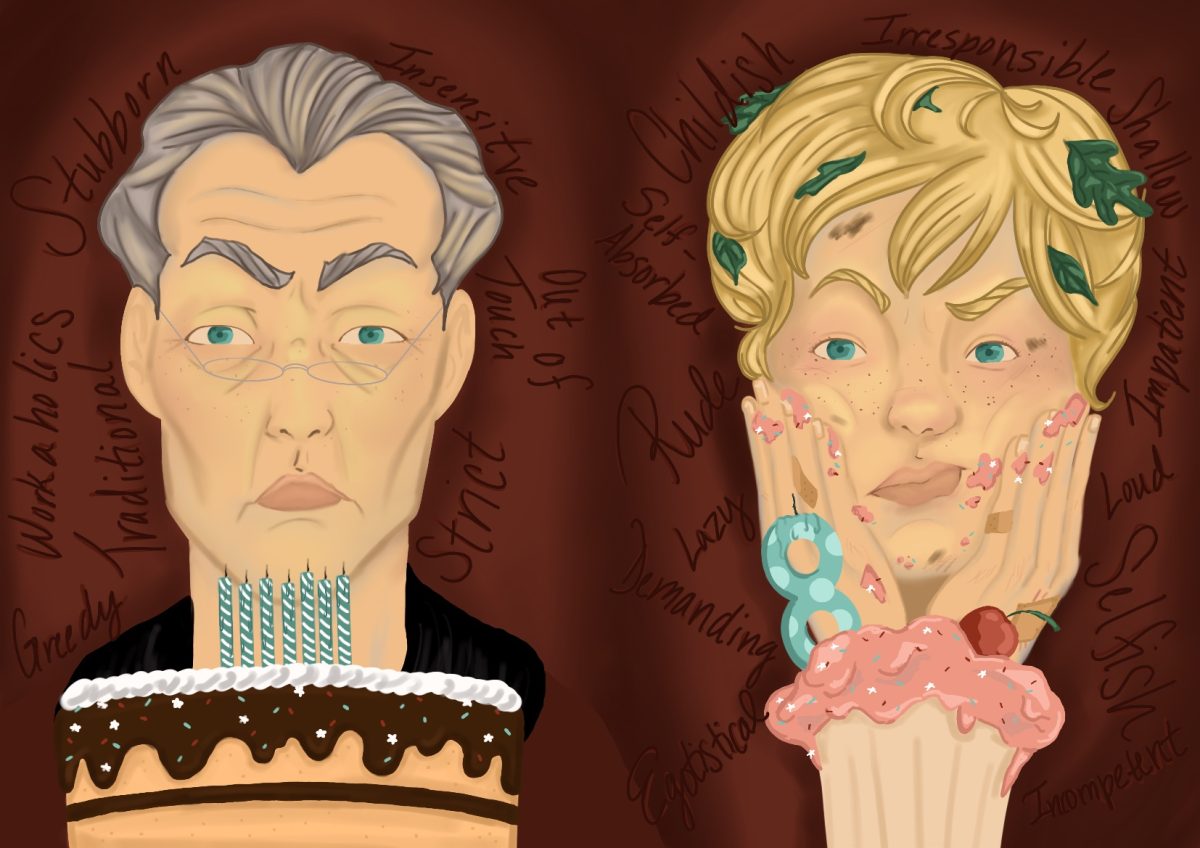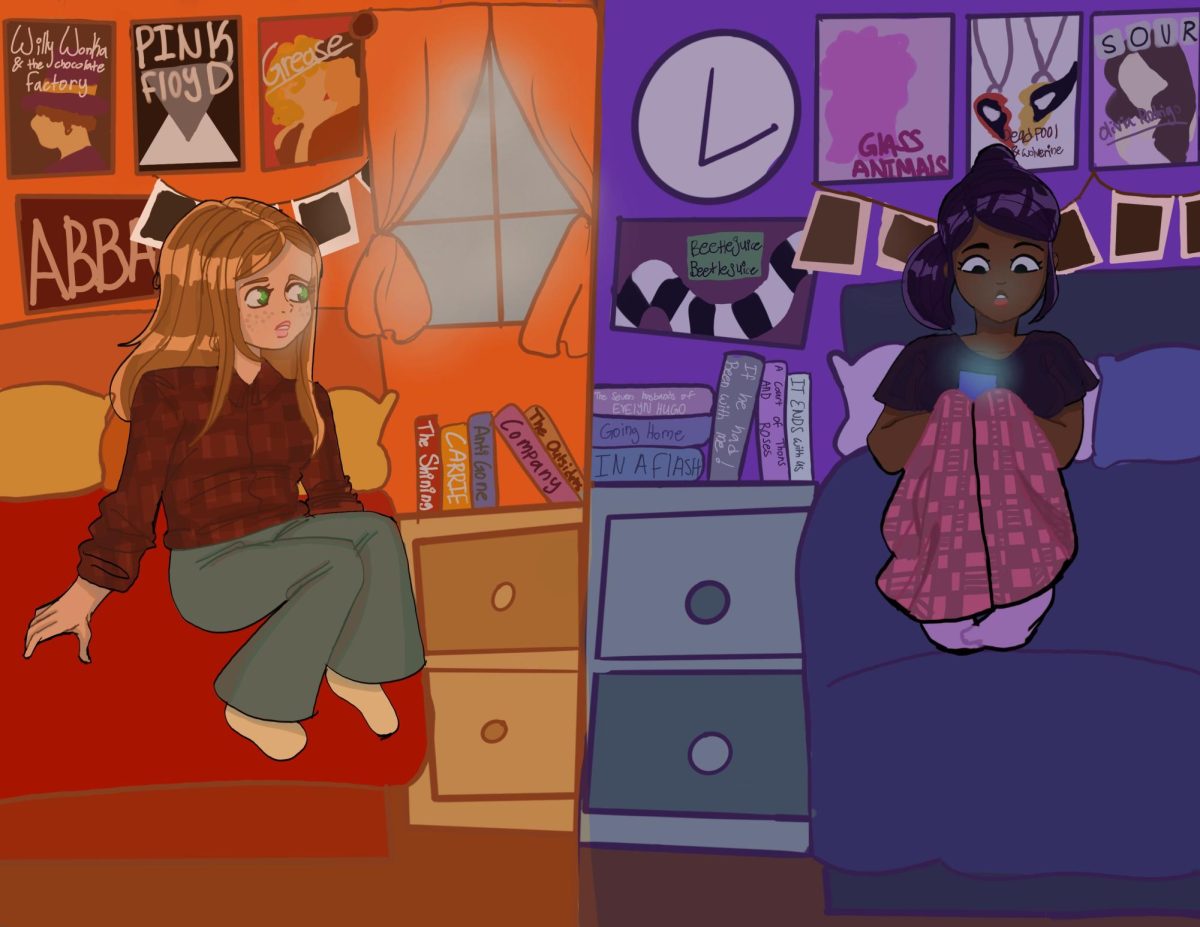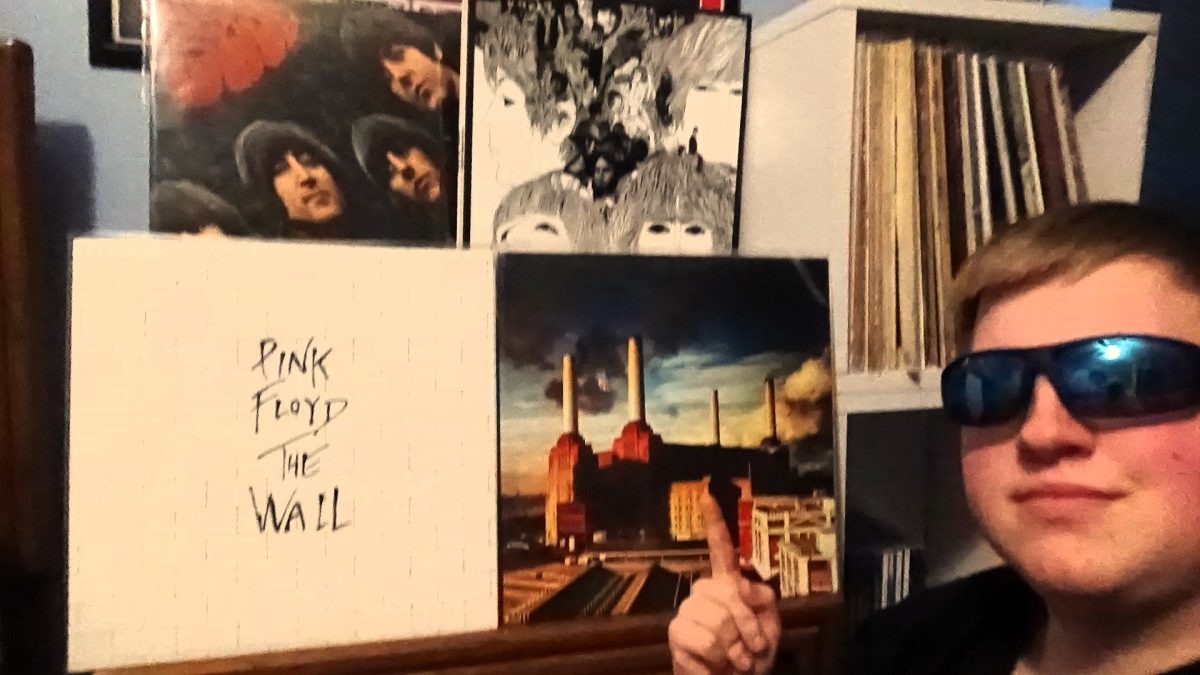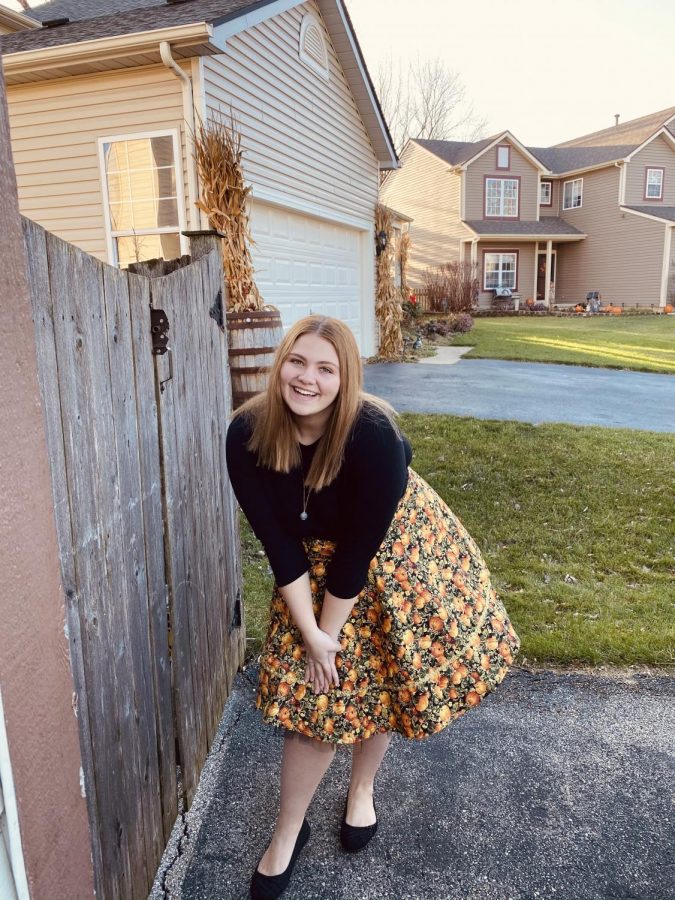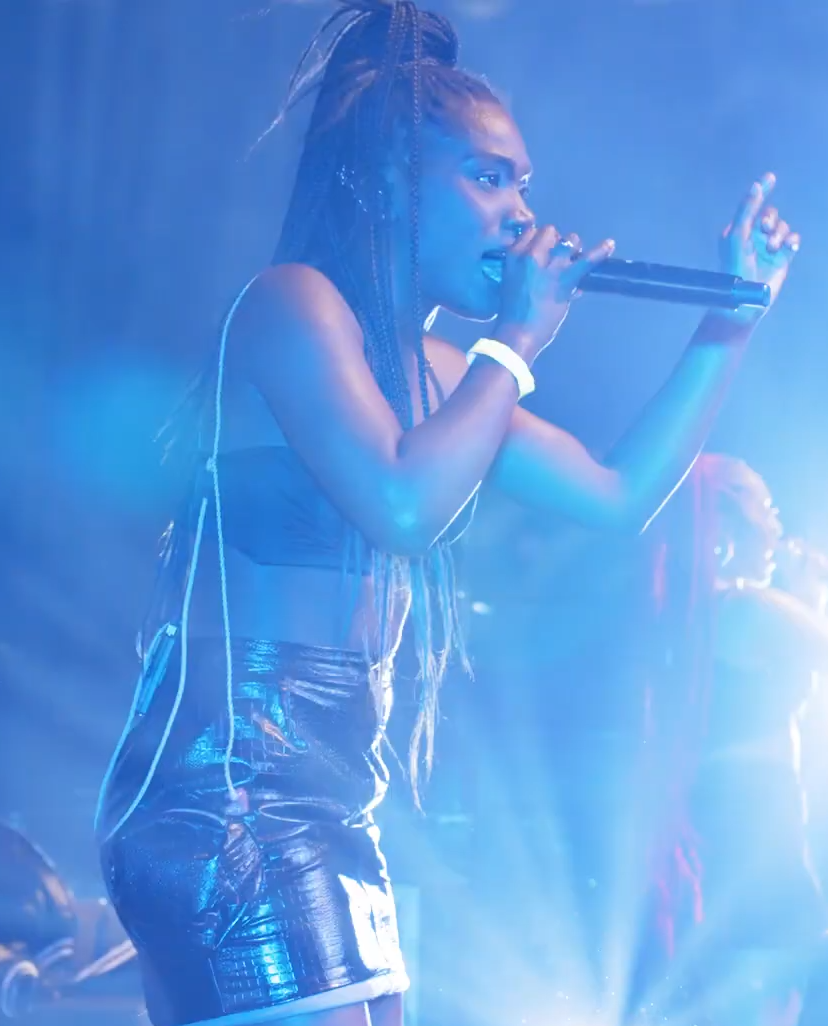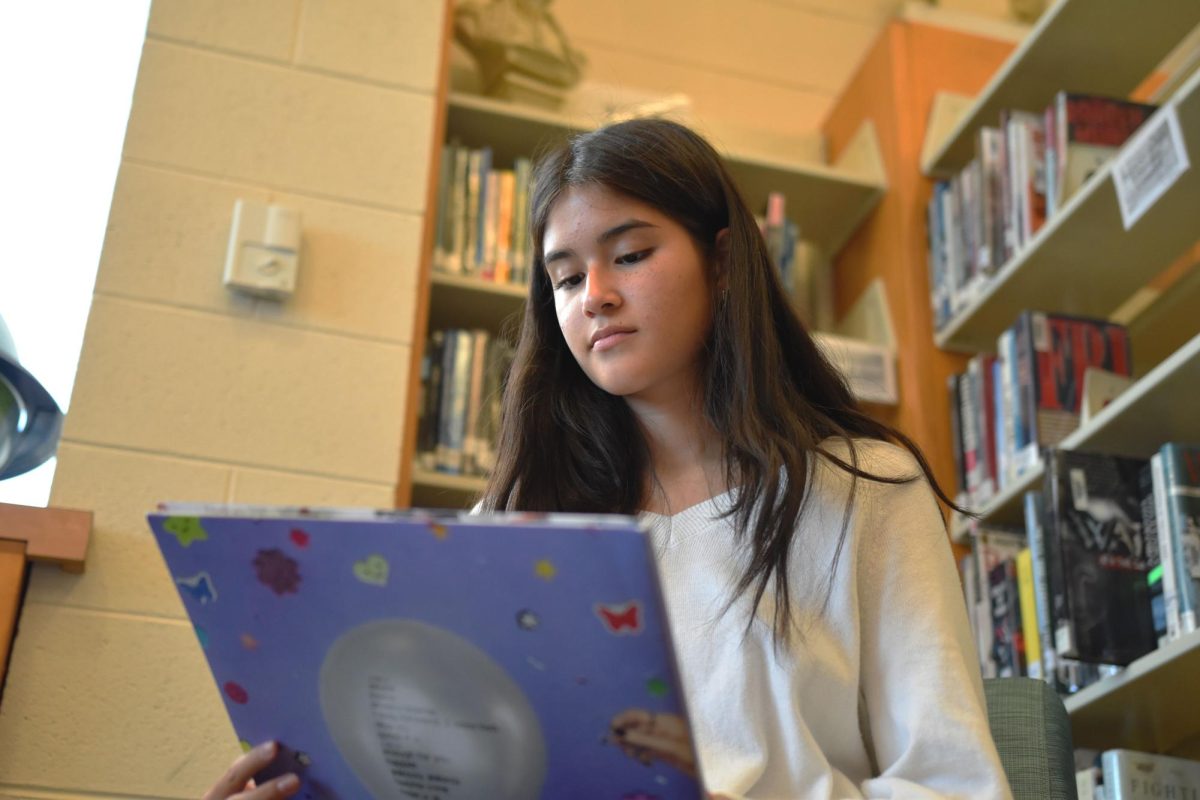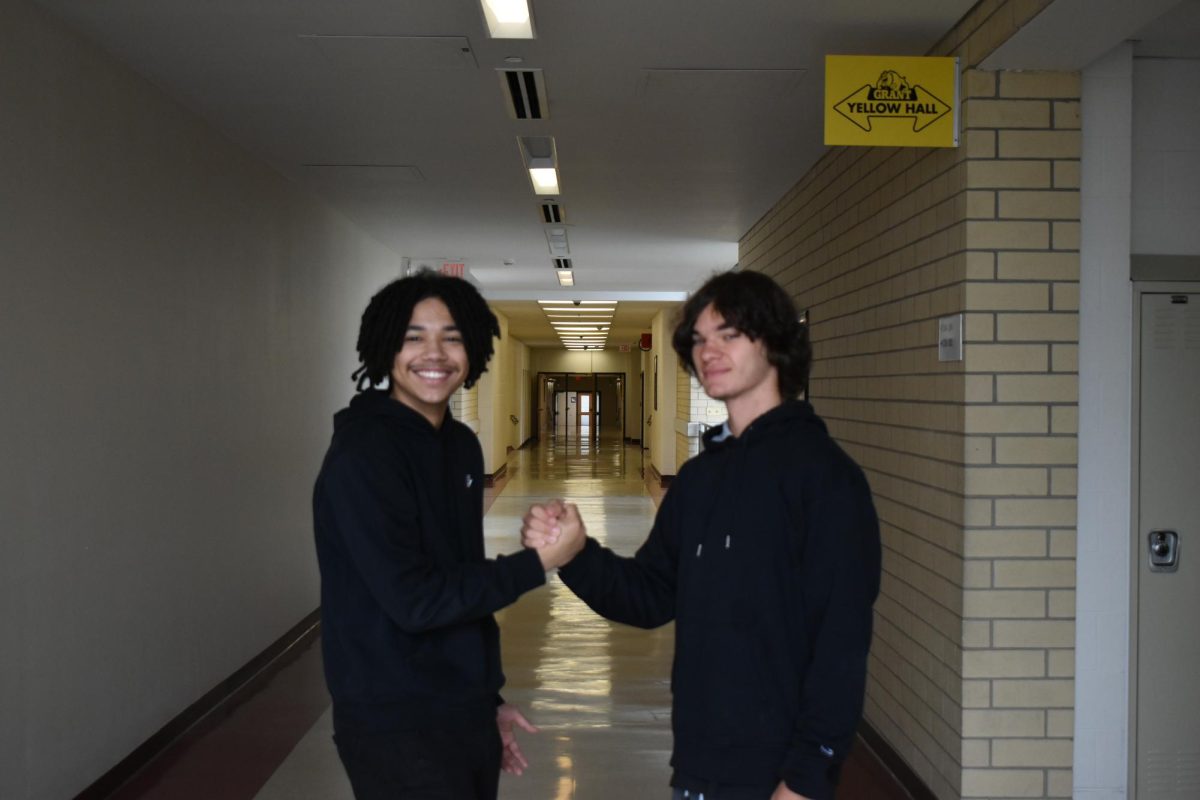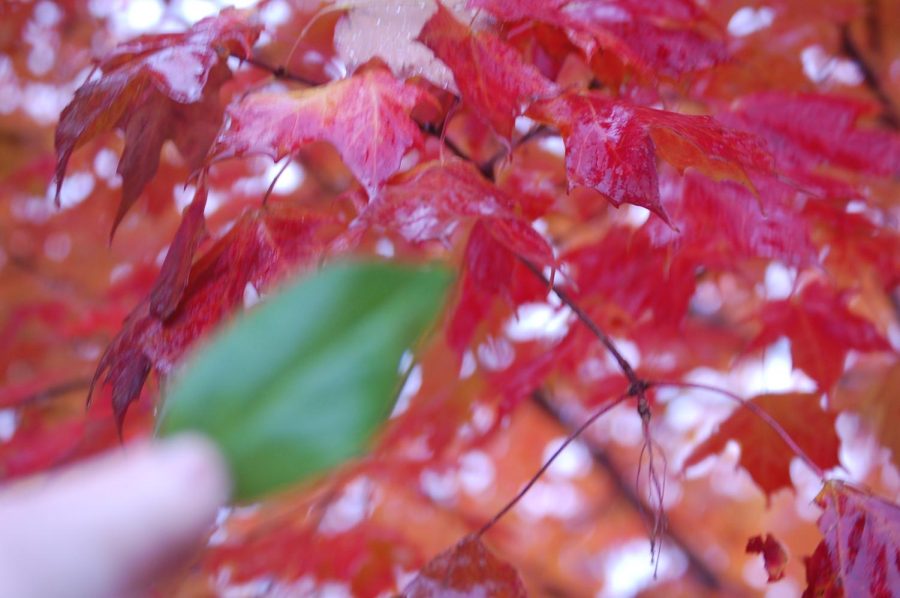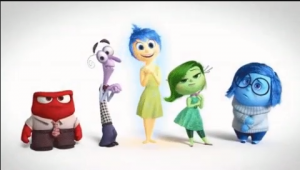Will Climate Change Affect the Fall Colors?
Fall leaves are an iconic part of autumn. As climate change increases, the graceful transition from green to orange as October approaches is at risk.
The comparison between a leave typically found in the summer versus a red tree in the fall.
January 1, 2023
Fall is an iconic season, and one of the most liked. The weather cools down, stores stock their shelves with hundreds of bags of candy, pumpkin patches become a beloved autumn hangout, decorations line the street eagerly waiting for someone to jump at the sight of them, and most importantly, the tree leaves transition from green to red or orange making the fall letting us know fall is here. The colors of fall come from the trees and environment around us, however, the possibility of the leaves not changing color is more likely than ever. Climate change could change fall as we know it forever. Climate change is the long-term shift in temperature and weather patterns. Some of these changes are natural, like different variations in the solar system. However, the main reason for climate change is burning fossil fuels such as coal, oil, and gas, which creates the greenhouse effect. The greenhouse effect refers to when the sun’s warmth is trapped in the Earth’s lower atmosphere. This could contain carbon dioxide and chlorofluorocarbons. In simpler terms, greenhouse gasses act like a huge blanket wrapped around the Earth creating and trapping heat on the inside.
The fall leaves change color in the fall because the days get shorter and the temperature drops. When there’s less sun, there’s less photosynthesizing, which then causes the chlorophyll in the leaves to break down, creating their warm color range. Chlorophyll is the chemical in leaves that makes them green. Once leaves don’t have their main food source (the sun) the chlorophyll breaks down, which then takes the green color out of their leaves. Since climate change makes the weather warmer, the trees will stay green for as long as they can before it finally gets cold. The higher temperatures, higher amounts of precipitation, increased humidity, and other causes like invasive species, acidic nutrients, length of the growing season, and many more, can contribute to the leaves staying green, instead of changing. Climate change has the potential to cause the warmer seasons to be longer, ultimately making the wait for the leaves to change unbearable. People have fueled climate change through agriculture, gas-powered vehicles, electricity, and heat, along with manufacturing.
This affects people in many ways, more than just getting rid of the pretty colors. Climate change is why Illinois has had snowy Halloweens and sunny winters. Illinois alone has gone up an average of 1-2 degrees Fahrenheit overall due to climate change. “…the Earth is now 1.1 degrees Celsius warmer than it was in the late 1800s,” the United Nations website stated. That seems insignificant, right? Well, the damage it has done is massive. It has created extreme heat, drought, increased flooding, intense storms, and rising sea levels. It also has the power to melt large pieces of ice. The glaciers melting could be compared to ice and water in a cup on a summer day. When you have a cup with ice, the ice doesn’t add much to the volume of the water but it still can overflow once the cubes melt. Now, on a bigger scale, the glaciers will create a much bigger effect. New York has a large chance of flooding due to the ice sheets in Greenland which could raise the sea levels by two feet. Not only will this create lots of damage, but it could also release some harmful bacteria. Climate change affects most things, living or not, whether it be animals, clean water, clean air, shelter, or food supplies. It is expected that between the years 2030 and 2050, there will be around 250,000 deaths a year caused by heat stress, malnutrition, and malaria. So, from experiencing heat, to natural disasters, climate change will affect more than just the leaves if nobody takes action.
As a community, there isn’t much Grant can do to stop climate change or even to make sure the leaves continue to change color, however, even if there isn’t any hope to cause immediate, monumental results, it is still important to make sure climate change doesn’t progress to a point of no return. According to GCHS Biology Teacher Mr. Rivette, some ways to combat climate change could be to “stop using energy and stop burning fossil fuels”. Rivette continued to suggest that we “Plant more vegetation for more life and trees because anything that’s in the atmosphere can be absorbed back.” Obviously it isn’t realistic to completely avoid consuming energy and fossil fuels, however, people can attempt to limit their consumption as much as possible. For example, people can take advantage of public transportation and carpooling.
Ultimately, climate change will be a problem for many years to come, and yes, the leaves have a high chance of not changing colors. The changes needed to combat climate change are beyond any one person, but everyone should still try to make an effort to take the hypothetical blanket off the Earth in every way they possibly can.

